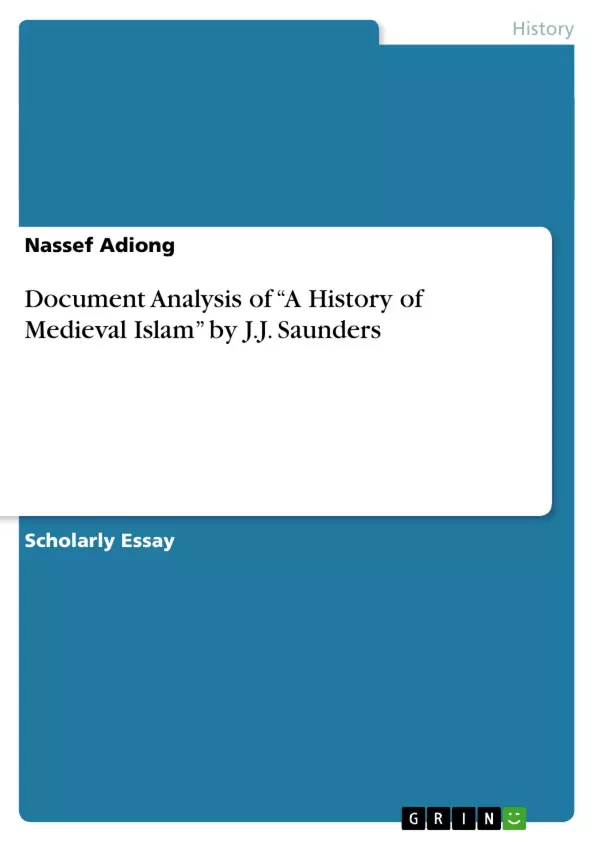One can crucially think and intellectually assumed that the civilization of the Arabs brought a medieval golden age that unified the whole West and South Asia, Northern Africa, and Southeastern Europe; stretching from Mesopotamia (Iraq), Persia (Iran), Asia Minor (Turkey), Egypt, the Arabian Peninsula, and India to the backdoors of the European continent (Spain) – was a product of the propagation of one powerful ideology, which is Islam.
In the book written by J.J. Saunders, a historian of middle age Islam, poignantly narrated the Islamic and Arab historiography in his book published in 1965 entitled “A History of Medieval Islam,” which have explicitly expressed a well-crafted academic research work during the medieval society of West Asia and the political interventions of different empires who have had occupied the whole boundless yet fragile region.
The proponent will succinctly try to examine this hypothesis, whether an indispensable Islam have unified half of the world through an inconsequential Arab civilization and factors that brought occupations into reality. The document in the last chapter, “The Civilization of Medieval Islam” will be the subject to a critical analysis.
Inhaltsverzeichnis (Table of Contents)
- The Civilization of Medieval Islam
- The Rise of the Arabic Civilization
- The Arab Conquests
- The Pax Islamica
- Free Trade and Economic Growth
- The Influence of Islam
- The Influence of Greek Science and Philosophy
- The Influence of India
- The Multi-Racial Nature of Arabic Culture
- The Importance of Persia
- The Dominance of Medicine
Zielsetzung und Themenschwerpunkte (Objectives and Key Themes)
The document analyzes J.J. Saunders' book "A History of Medieval Islam" to investigate the factors that contributed to the rise of Arabic civilization during the medieval period. The analysis focuses on the role of Islam, the influence of other cultures, and the impact of political and economic factors.
- The role of Islam in shaping Arabic civilization
- The influence of Greek science and philosophy on Arabic thought
- The contributions of other cultures, particularly Persia, to Arabic civilization
- The importance of trade and economic growth in the development of Arabic society
- The impact of political stability and the Pax Islamica on the flourishing of arts and sciences
Zusammenfassung der Kapitel (Chapter Summaries)
The chapter "The Civilization of Medieval Islam" delves into the factors that led to the rise of Arabic civilization during the medieval period. It explores how the Arab conquests politically unified a vast area, fostering a new civilization. The chapter discusses the role of Islam in providing a framework and language, but also emphasizes the influence of Greek science and philosophy, as well as the contributions of other cultures like Persia and India.
The chapter further highlights the importance of trade and economic growth in the development of Arabic society, and the role of the Pax Islamica in creating a stable environment for the flourishing of arts and sciences. It also examines the multi-racial nature of Arabic culture and the significant role played by Persians in shaping the civilization.
Schlüsselwörter (Keywords)
The key terms and concepts explored in this document include Arabic civilization, Islam, Greek science, Persian influence, trade, economic growth, Pax Islamica, multi-culturalism, and medicine.
- Quote paper
- Researcher Nassef Adiong (Author), 2008, Document Analysis of “A History of Medieval Islam” by J.J. Saunders, Munich, GRIN Verlag, https://www.grin.com/document/121021



